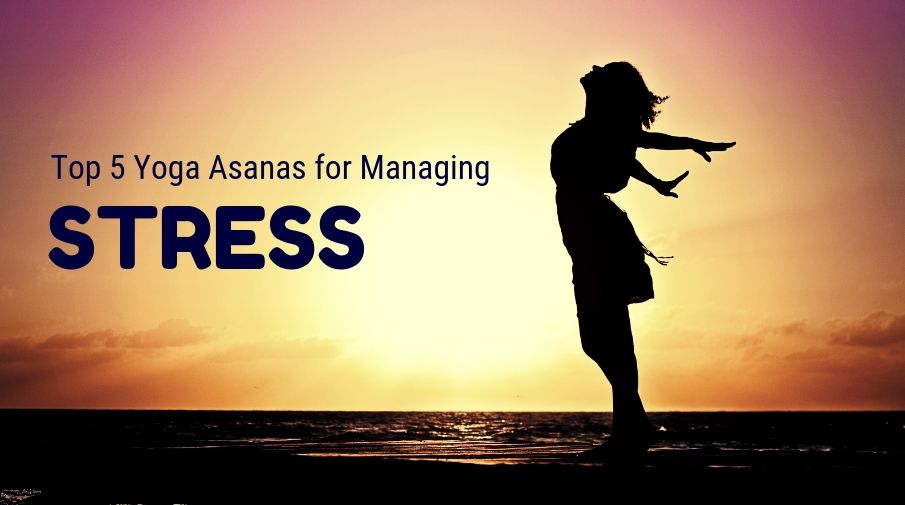Top 5 Yoga Asanas for Managing Stress
Stress is a real issue of the present generation and the only ones to blame for this is ourselves and our over thinking habits. To cope up the present over tough lifestyle, we all are dealing with immense pressure and stress. In fact, more pressure and stress leads to serious anxiety issues and depression trauma. Therapists are the first people to look out for when someone is dealing with these issues. But, if you don’t want to go till that level and want to sort out things on a regular easy basis, you must indulge in yoga asanas. Yoga has a direct connection with a mind and soul and leads to lessen the pressure off your mind. There are specific poses that targets managing stress and here we talk about them.
1. Balasana (Child’s Pose)
How to do it: Sit on your knees with resting the palms on the
ground. Bend your body extremely low and forward so that your forehead touches
the ground. Stay in that position for as long as you can and that would make
you relaxed. Breathe normally all these while. Slowly lift your head and come
back to the sitting position on the knees itself. Repeat it for some time.
How does it work for stress: As the name says, this pose helps you
to relax your mind just
like a child’s. It releases positive endorphins in your brain. It is a
very soothing pose for the adrenals. It is as soothing as taking a bubble bath.
2. Uttanasana (Standing forward
Pose)
How to do it: Stand straight with hands hanging beside your torso,
slightly bend your knees, keep your hips out, touch the feet with your hands
completely. Do not force yourself so much in the first go because you will
improve with time.
How does it work for stress: This pose helps in calming your busy
mind by balancing the entire nervous system. This one helps in balancing the
sacral chakra which is directly related to emotional energies in your brain.
3. Adho Mukha Svanasana (Downward
facing Dog Pose)
How to do it: This is also one of the steps of the epic surya
namaskar. This particular exercise relaxes your entire body from the mind to
the nerves. If you are suffering from excessive stress then doing this yoga
asana daily while giving salutation to the sun or doing surya namaskar can help
your brain remain stress free.
How does it work for stress: Stand straight with straight spine and
palms on the either side of your torso. Bend forward slowly and place your
palms on the ground and let your face be placed down. Slowly stretch your legs
one by one backwards and maintain the balance in this posture. Your elbows
should be straight and fingers should be spread out. Inhale and exhale slowly
during the entire process.
4. Garudasana (Eagle Pose)
How to do it: Stand straight with hips and arms wide apart. Bring
the right arm over the left arm. Now, bring the palms together by bending the
elbows. Bend the knees too. Now, lift the left thighs over the right thigh.
Come back to standing straight and do it with the another legs and arms.
How does it work for stress: This one is the greatest stress
management tool as it would help you concentrate on the mind in a single point.
The common steps for emotional tension are shoulders and hips and it also helps
to free up their tightness.
5. Savasana (Corpse Pose)
How to do it: Simply lie down in the supine position and close your
eyes. Relax and chill completely without any thoughts going on in your mind.
Lie down lifeless with your entire body being loose. Do it for some time and
end your tough yoga asanas with this one.
How does it work for stress: End your stress busting yoga asana
with this pose. You can relax to the core with this asana. This one brings
breathing to the normal levels. This in turn soothes your stress levels.
Conclusion
As cliché as it may sound but it is totally correct that indulging in
yoga on a regular basis can help in managing stress and work as an accurate
stress buster for you. These specific yoga poses and asanas
help your mind to stay calm and composed. Alongside, it also helps you to stay
in shape and fit for a lifetime if you always do.






Comments
Post a Comment